Western Electric
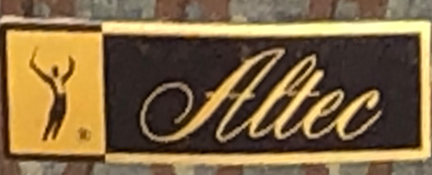 The Western Electric Company was an American electrical engineering and manufacturing company that was officially founded in 1869 and, as a wholly owned subsidiary of AT&T for most of its lifespan, served as the primary equipment manufacturer, supplier, and purchasing agent for the Bell System from 1881 to 1984 when it was dismantled. The company was responsible for many technological innovations, including the development of the transistor, as well as seminal developments in industrial management.
The Western Electric Company was an American electrical engineering and manufacturing company that was officially founded in 1869 and, as a wholly owned subsidiary of AT&T for most of its lifespan, served as the primary equipment manufacturer, supplier, and purchasing agent for the Bell System from 1881 to 1984 when it was dismantled. The company was responsible for many technological innovations, including the development of the transistor, as well as seminal developments in industrial management.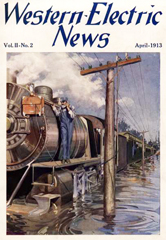
 In 1856, George Shawk, a craftsman and telegraph maker, purchased an electrical engineering business in Cleveland, Ohio. On December 31, 1869, he entered apartnership with Enos M. Barton, and later sold his share to inventor Elisha Gray. In 1872, Barton and Gray moved the business to Clinton Street, Chicago, Illinois, and incorporated it as the Western Electric Manufacturing Company. They manufactured a variety of electrical products including typewriters, alarms, and lighting and had a close relationship with telegraph company Western Union, to whom they supplied relays and other equipment.
In 1856, George Shawk, a craftsman and telegraph maker, purchased an electrical engineering business in Cleveland, Ohio. On December 31, 1869, he entered apartnership with Enos M. Barton, and later sold his share to inventor Elisha Gray. In 1872, Barton and Gray moved the business to Clinton Street, Chicago, Illinois, and incorporated it as the Western Electric Manufacturing Company. They manufactured a variety of electrical products including typewriters, alarms, and lighting and had a close relationship with telegraph company Western Union, to whom they supplied relays and other equipment.
In 1875, Gray sold his interests to Western Union, including the caveat that he had filed against Alexander Graham Bell's patent application for the telephone. The ensuing legal battle between Western Union and the Bell Telephone Company over patent rights ended in 1879 with Western Union withdrawing from the telephone market and Bell acquiring Western Electric in 1881.
In 1901, Western Electric secretly purchased a controlling interest in a principal competitor, the Kellogg Switchboard & Supply Company, but in 1909 was forced by a lawsuit to sell back to Milo Kellogg.
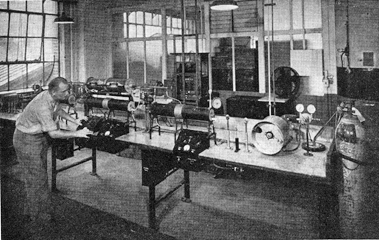 In 1920, Alice Heacock Seidel was the first of Western Electric's female employees to be given permission to stay on after she had
In 1920, Alice Heacock Seidel was the first of Western Electric's female employees to be given permission to stay on after she had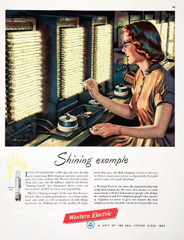 married. This set a precedent in the company, which previously had not allowed married women in their employ. Miss Heacock had worked for Western Electric for sixteen years before her marriage, and was at the time the highest-paid secretary in the company. In her memoirs, she wrote that the decision to allow her to stay on "required a meeting of the top executives to decide whether I might remain with the Company, for it established a precedent and a new policy for the Company - that of married women in their employ. If the women at the top were permitted to remain after marriage then all women would expect the same privilege. How far and how fast the policy was expanded is shown by the fact that a few years later women were given maternity leaves with no loss of time on their service records."
married. This set a precedent in the company, which previously had not allowed married women in their employ. Miss Heacock had worked for Western Electric for sixteen years before her marriage, and was at the time the highest-paid secretary in the company. In her memoirs, she wrote that the decision to allow her to stay on "required a meeting of the top executives to decide whether I might remain with the Company, for it established a precedent and a new policy for the Company - that of married women in their employ. If the women at the top were permitted to remain after marriage then all women would expect the same privilege. How far and how fast the policy was expanded is shown by the fact that a few years later women were given maternity leaves with no loss of time on their service records."
In 1925, ITT purchased the Bell Telephone Manufacturing Company of Brussels, Belgium, and other worldwide subsidiaries from AT&T, to avoid an antitrust action. The 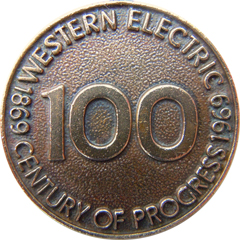 company manufactured rotary system switching equipment under the Western Electric brand.
company manufactured rotary system switching equipment under the Western Electric brand.
Early on, Western Electric also managed an electrical equipment distribution business, furnishing its customers with non-telephone products made by other manufacturers. This electrical distribution business was spun off from Western Electric in 1925 and organized into a separate company, Graybar Electric Company, in honor of the company's founders, Elisha Gray and Enos Barton.
Bell Telephone Laboratories was half-owned by Western Electric, the other half belonging to AT&T.
Here are photos of a very early Western Electric microphone provided to MOMSR by Steve Fisherman.
On 04/05/2022 Ron Hummel sent the following Message: "Correction on one of your items. "Early Western Electric Microphone". You show 2 images, but they are not microphones, they are speakers. The paper cones are gone, just the drivers and the housings are there."
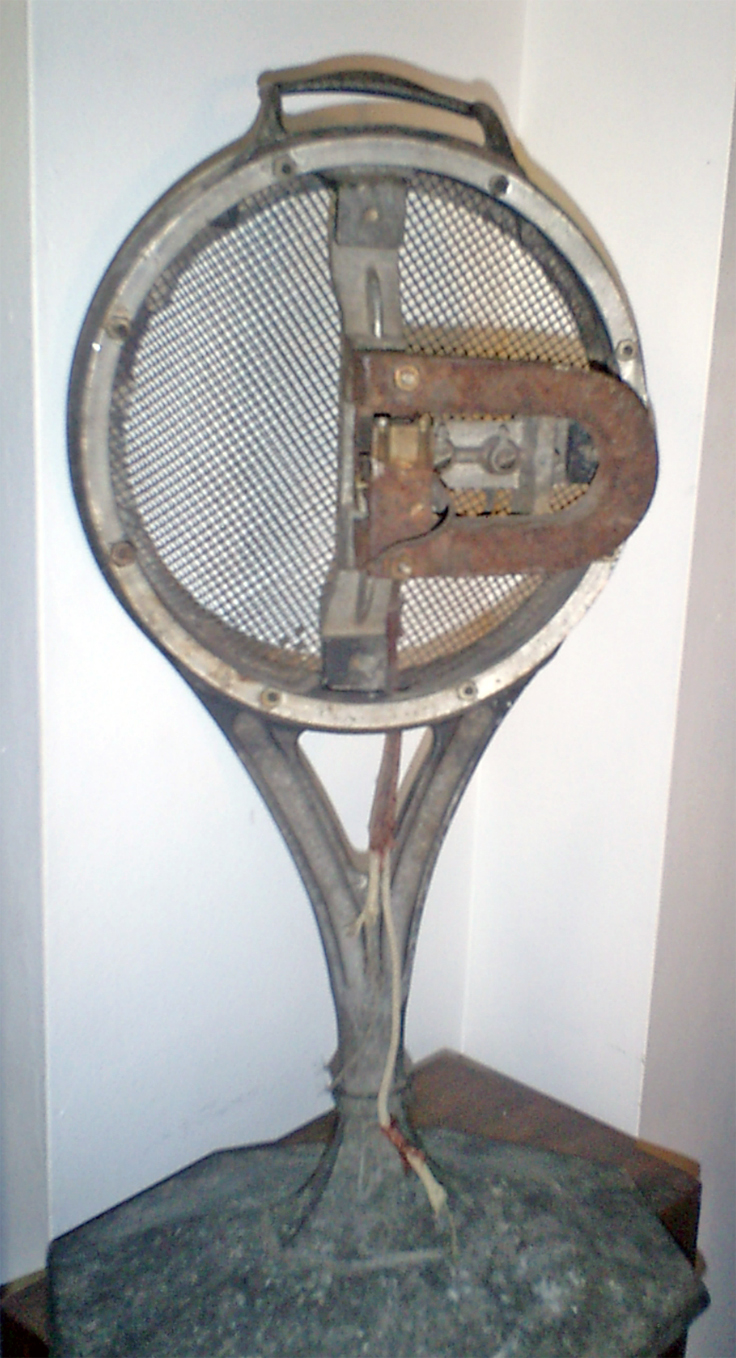
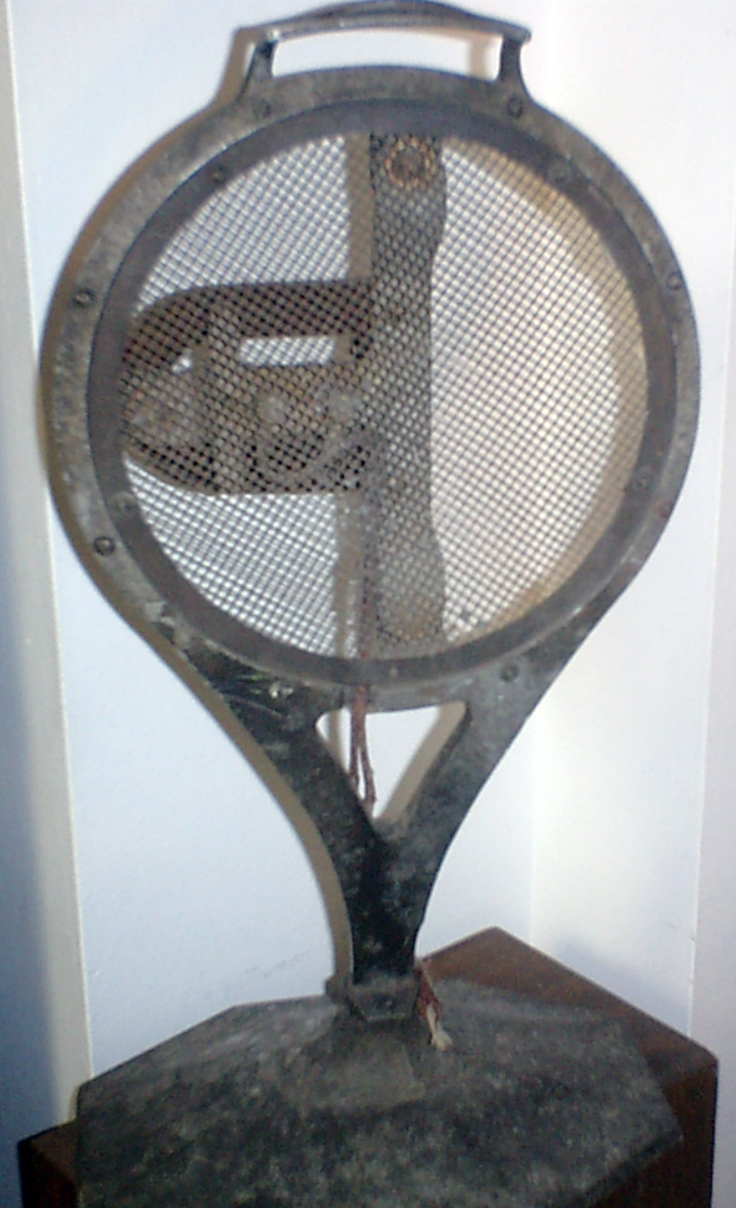
Altec Lansing is a U.S. audio electronics company founded in 1927. Their primary products are loudspeakers and associated audio electronics for professional, home, 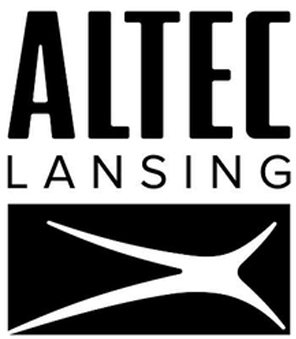 automotive and multimedia applications.
automotive and multimedia applications.
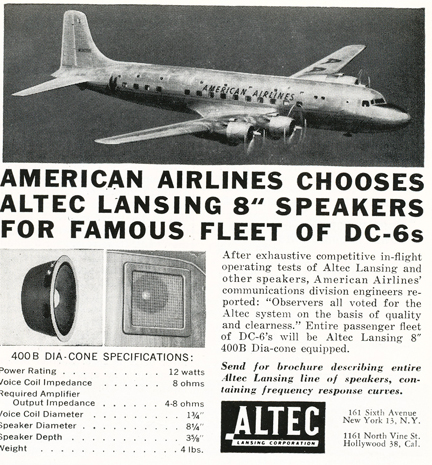 Engineers at Western Electric, who later formed Altec Services Company, developed the technology for motion picture sound that was introduced in 1927, with the release of The Jazz Singer. The movies, in sound, had found the answer to radio. But they did not find an easy answer to the massive depression that spread over the country in the 1930’s. While Eddie Cantor was singing, "Potatoes are cheaper, tomatoes are cheaper, now's the time to fall in love - former movie patrons couldn't dig up the price of a ticket. By 1936, Western Electric decided to dissolve its big motion picture service organization. Rather than see this happen, a group of ambitious young engineers, headed by the late George Carrington, Sr., and L. W. (Mike) Conrow, and including Alvis Ward, went into action. They founded Altec (for "all technical"), more from faith in their own abilities than from the economic facts of the situation, and moved ahead. Predictions were that Altec might last two years.
Engineers at Western Electric, who later formed Altec Services Company, developed the technology for motion picture sound that was introduced in 1927, with the release of The Jazz Singer. The movies, in sound, had found the answer to radio. But they did not find an easy answer to the massive depression that spread over the country in the 1930’s. While Eddie Cantor was singing, "Potatoes are cheaper, tomatoes are cheaper, now's the time to fall in love - former movie patrons couldn't dig up the price of a ticket. By 1936, Western Electric decided to dissolve its big motion picture service organization. Rather than see this happen, a group of ambitious young engineers, headed by the late George Carrington, Sr., and L. W. (Mike) Conrow, and including Alvis Ward, went into action. They founded Altec (for "all technical"), more from faith in their own abilities than from the economic facts of the situation, and moved ahead. Predictions were that Altec might last two years.
Originally, Altec Services Company serviced the theater sound systems the company founders had helped develop. In 1941 the Altec Services Company purchased the nearly bankrupt Lansing Manufacturing Company and melded the two names, forming the Altec Lansing Corporation, and with the manufacturing capabilities of the former Lansing Manufacturing Company, they quickly expanded into manufacturing horn loudspeakers.
The period between 1945 and mid-1963 is graphic evidence of the steady Altec growth LTV has come to look for in this important segment of its corporate team. In that period, Altec:
• Began manufacturing audio amplifiers.
• Became the first company to promote and advertise nationally professional sound systems adaptable for use in the home (thus beginning the hi-fi era) .
• Introduced Voice of the Theatre speaker systems that have become known through much of the world.
• Introduced the first commercial condenser microphone .
• Entered the microphone field.
• Entered the professional sound field for radio and recording studios .
• Played a leading role in introduction of stereophonic sound into movie theatres.
• Equipped theaters all over the world with Altec Stereophonic sound equipment .
• Entered the high intensity sound measurement field.
• Completed a modern headquarters plant at Anaheim, California, adjacent to Disneyland. • Organized a national sales force.
• Entered the high intensity sound generation field.
• Developed the first transistorized repeater amplifier and entered the telephone repeater field .
• Introduced the Giant Voice public address system for use in the Civil Defense Warning System.
• Launched a solid state amplifier conversion program.
• Purchased Gonset Division of Young Spring & Wire, thus entering the amateur and two-way radio communication field.
In 1958 the Altec Lansing Corporation was purchased by James Ling who made it part of LTV Ling Altec. LTV spun off Altec which it loaded down with debt first. By 1974, the company was saddled with debt. It was reorganized under Chapter 11 as Altec Corporation and continued for 10 years. Altec filed a second bankruptcy. In 1984, Gulton Industries purchased the brand out of Chapter 11 bankruptcy. Gulton was acquired by Mark IV Audio.Since then, there has been a string of owners, purchased in 1986 by Sparkomatic with the Pro equipment still made by Mark IV Audio, Mark IV sold out to Telex, who closed down the Pro division and folded its products into Electro-Voice. In 2005 Altec Lansing Technologies was acquired by Plantronics, 2009 bought by Prophet Equity, and has been owned since 2012 by the Infinity Group, a company which acquires struggling companies.
Popular loudspeakers included the Altec Lansing Duplex 600-series coaxial loudspeaker, studio monitors from the 1940s to the 1980s, and the Altec "Voice of the Theatre" line of loudspeakers widely used in movie theaters, concert halls, and also in rock concerts from the 1960s to the 1990s, such as custom designs used at Woodstock Festival. more
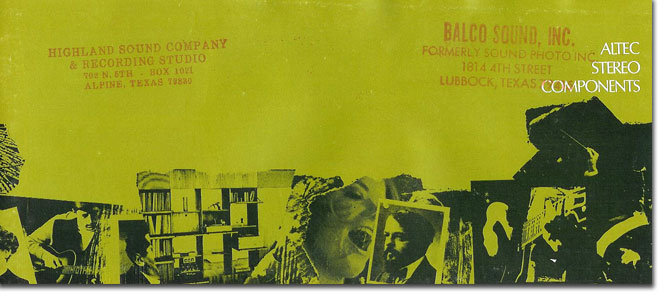

Original Altec brochure from our Highland Sound Company/Phantom Productions, Inc.

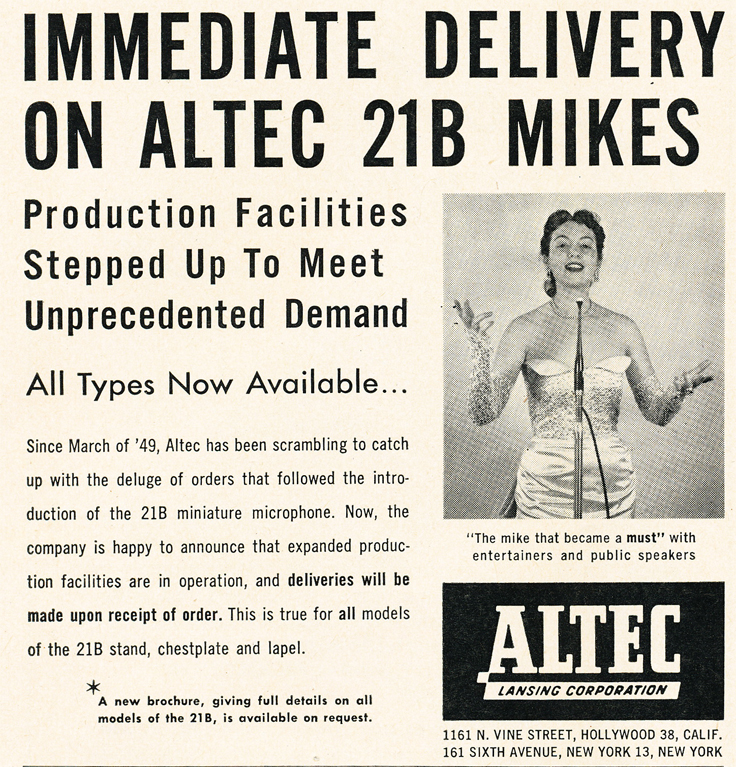
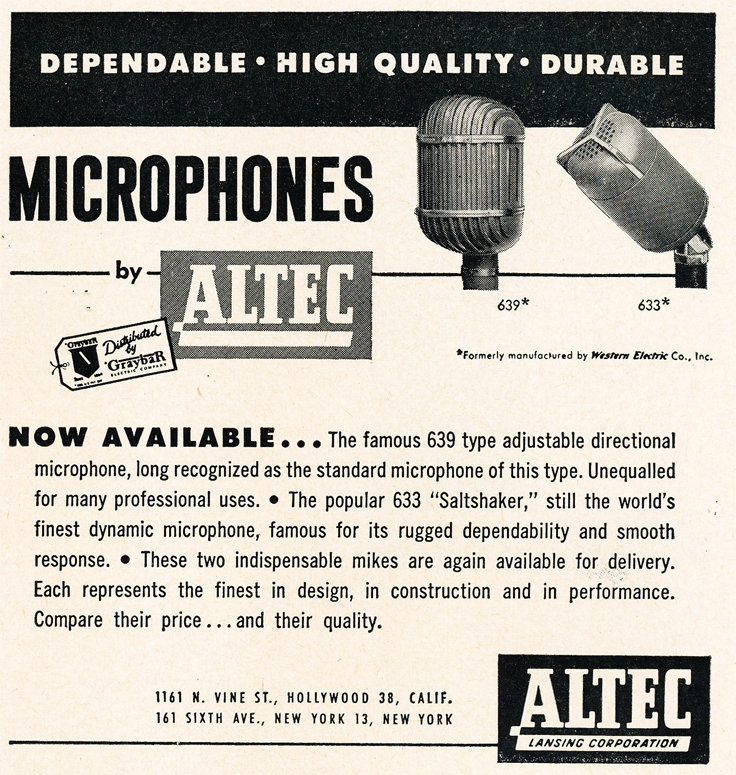

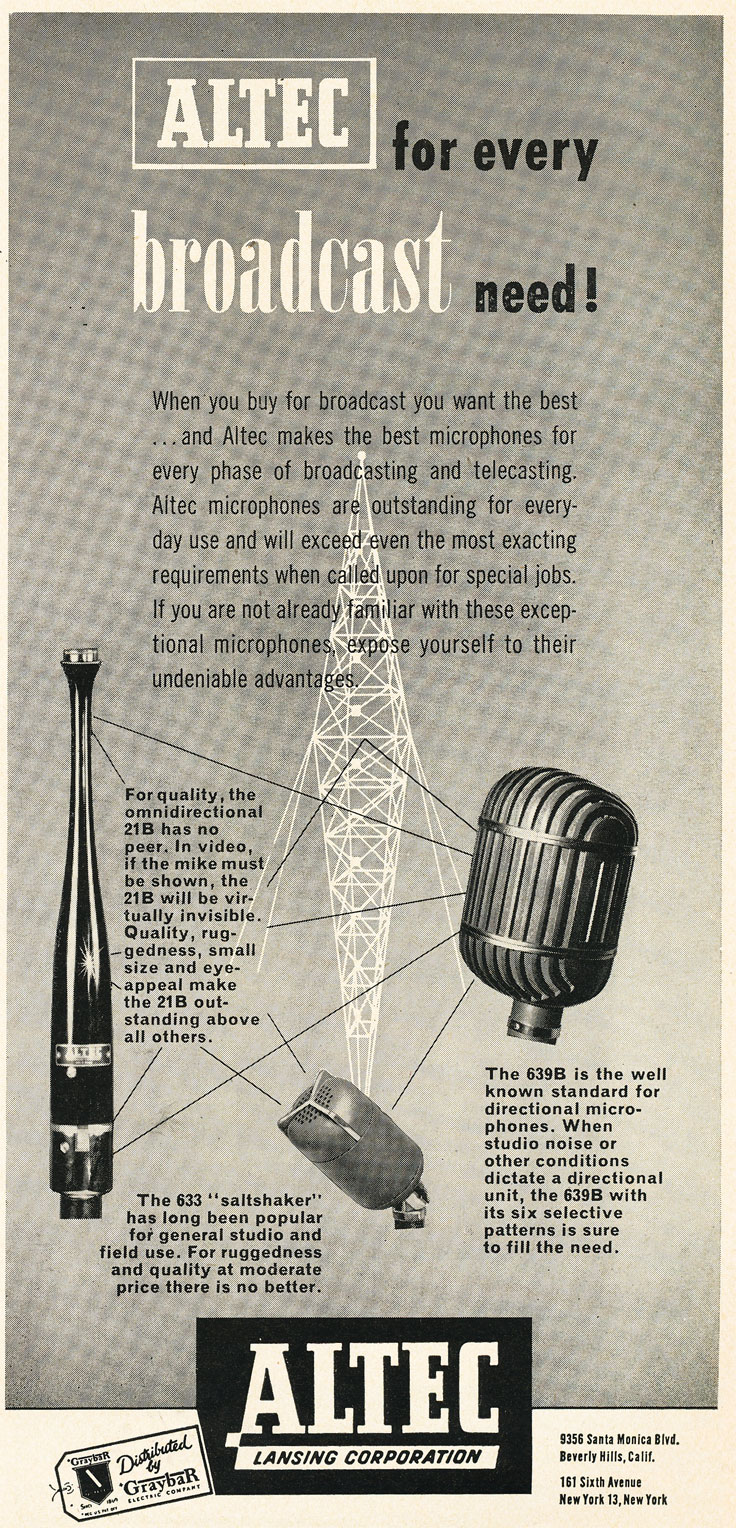
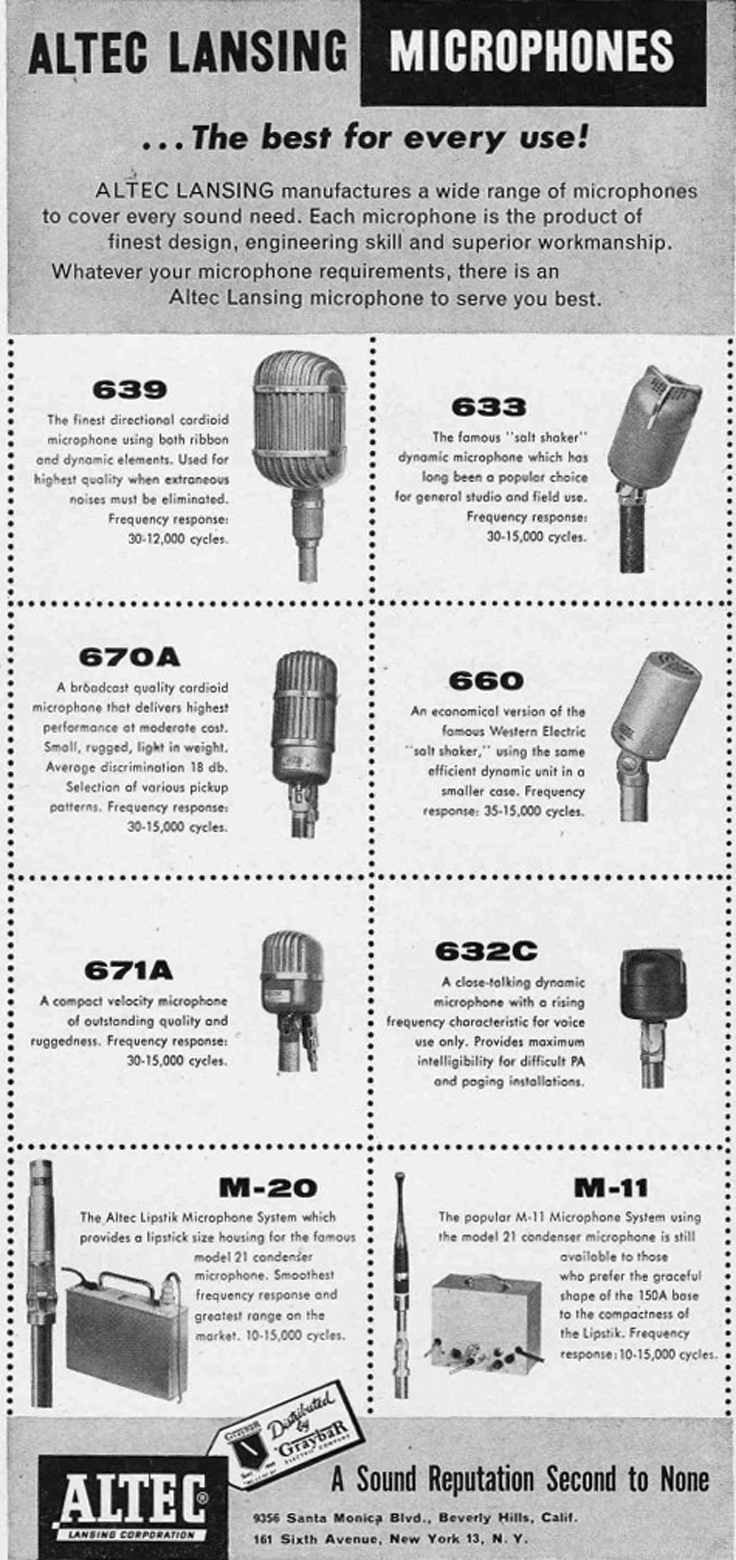
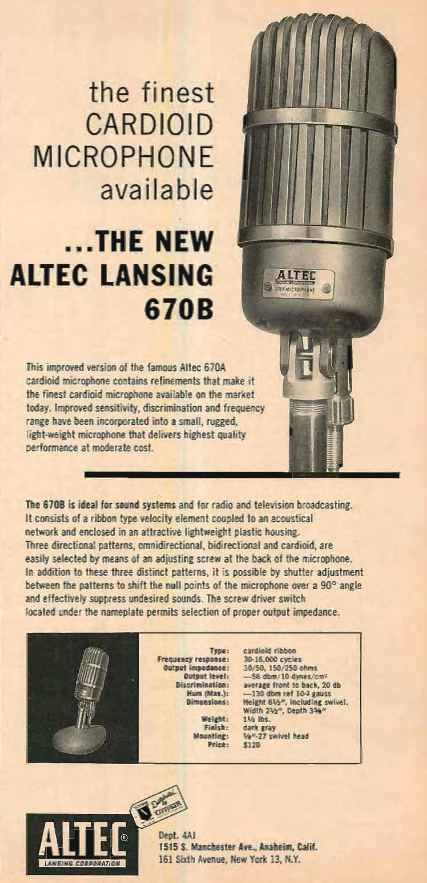
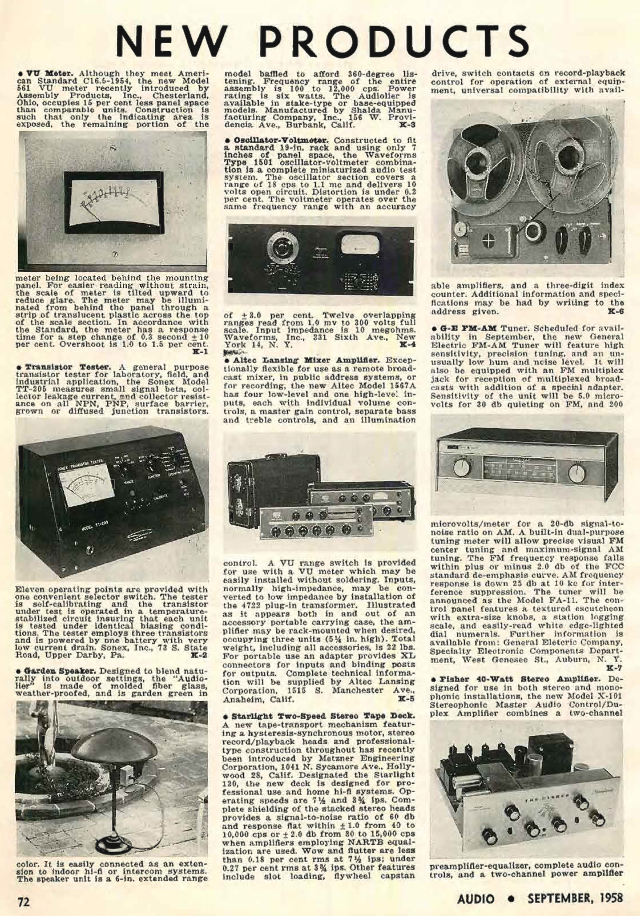
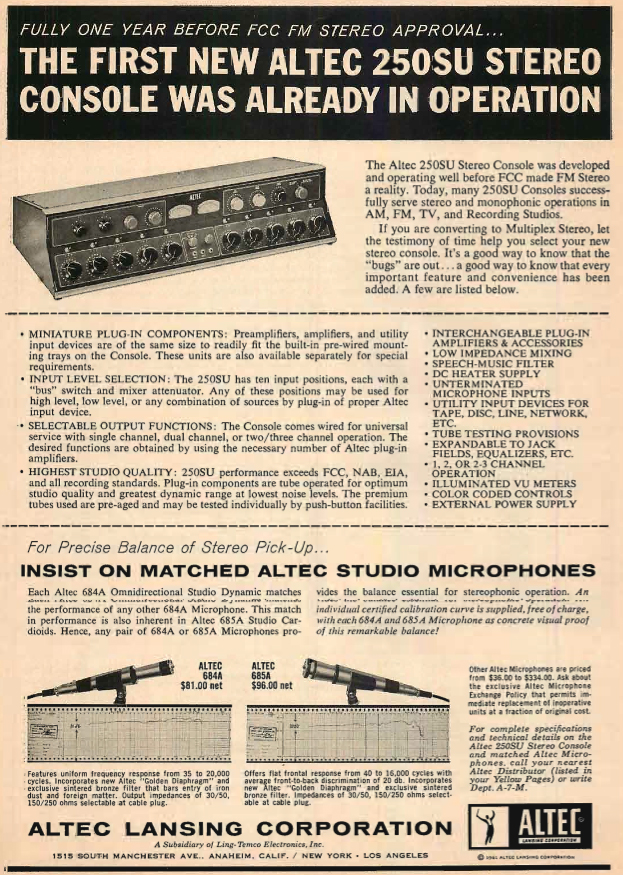
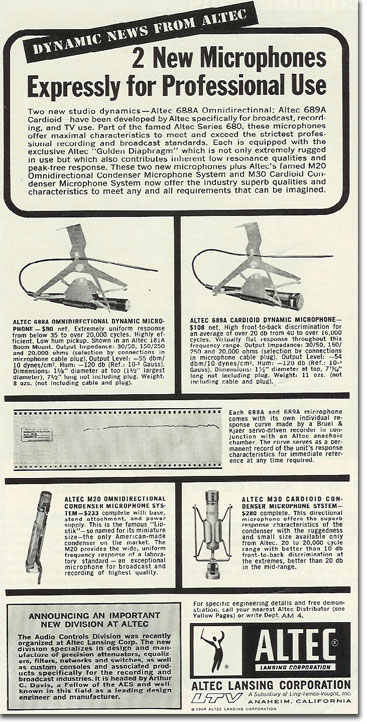

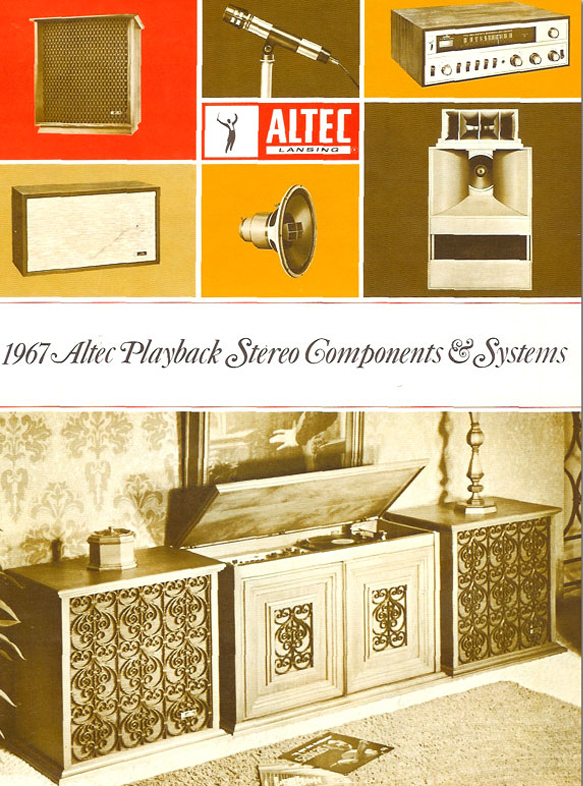
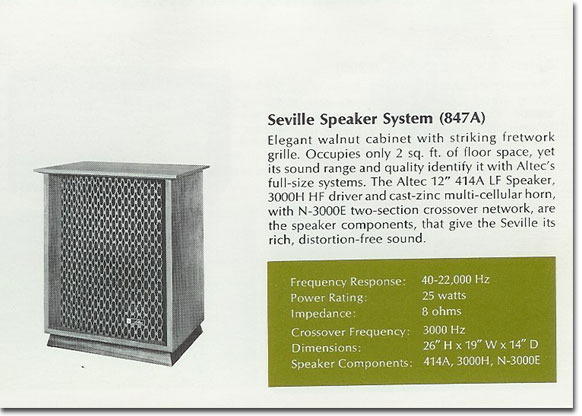
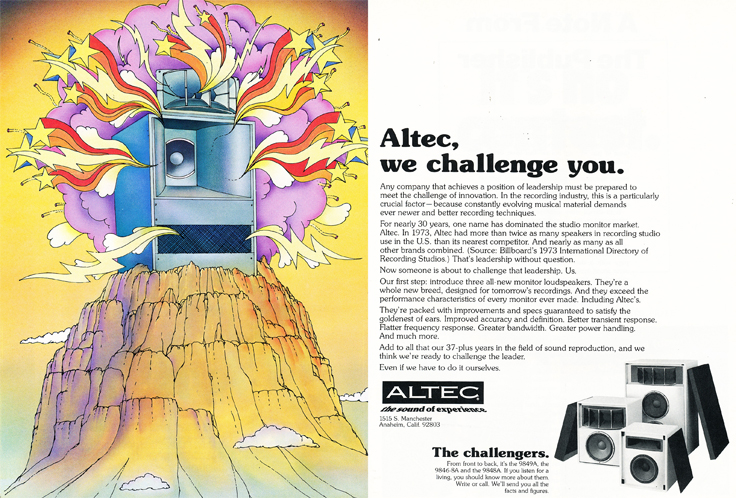


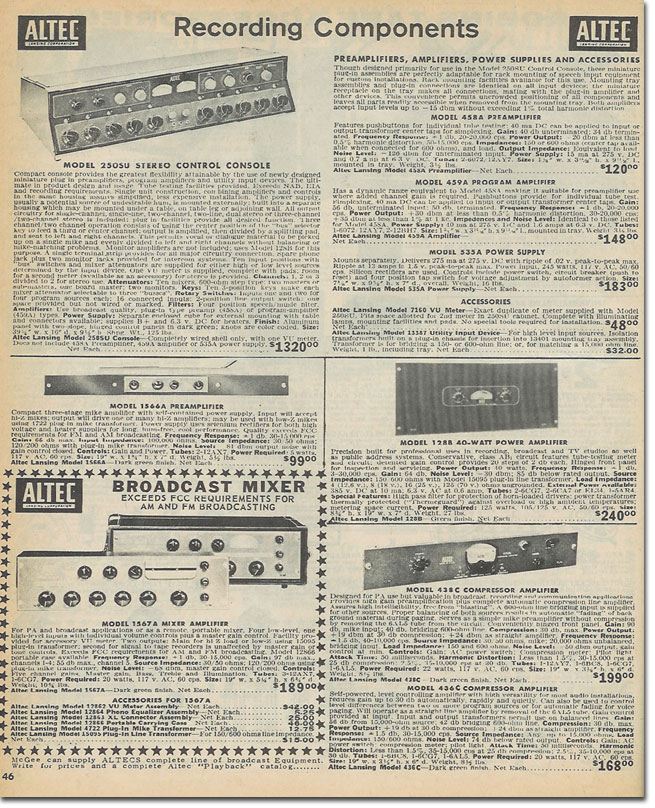
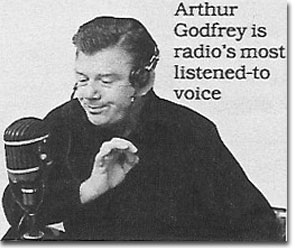
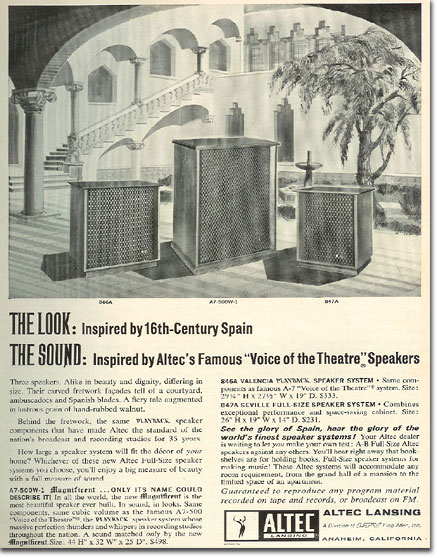
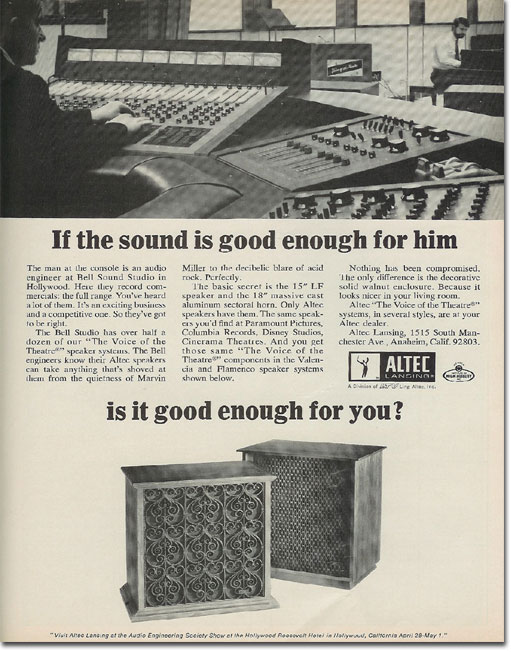

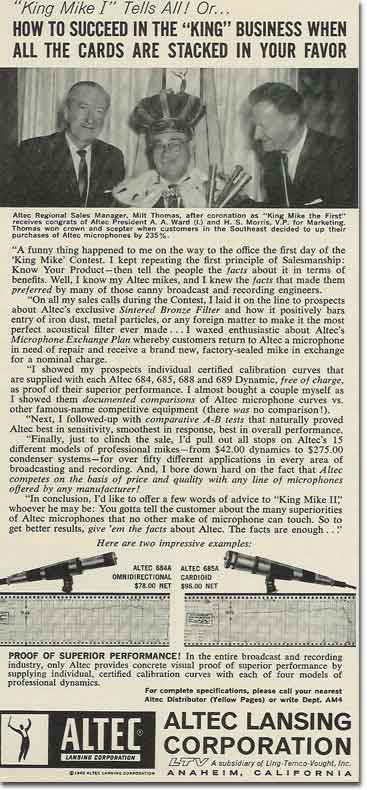

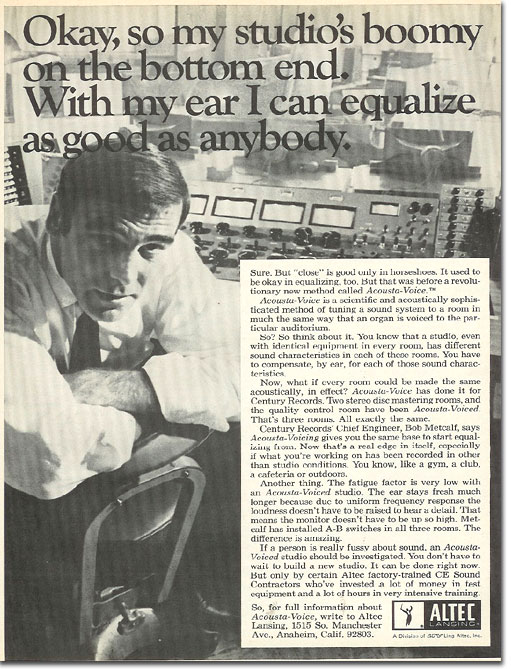
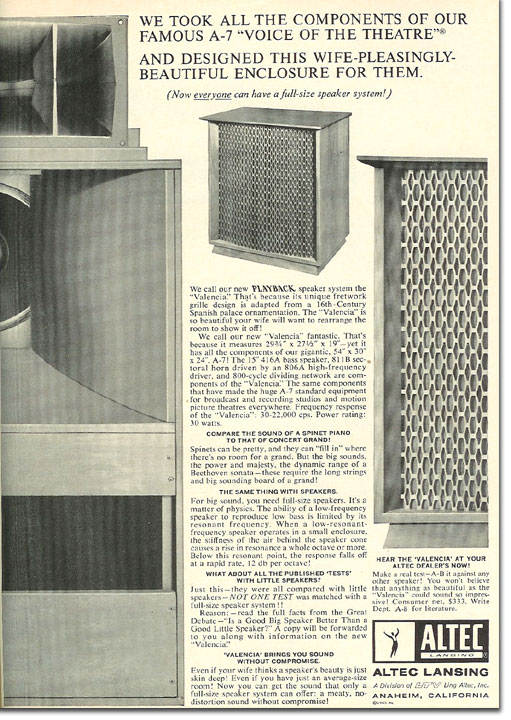
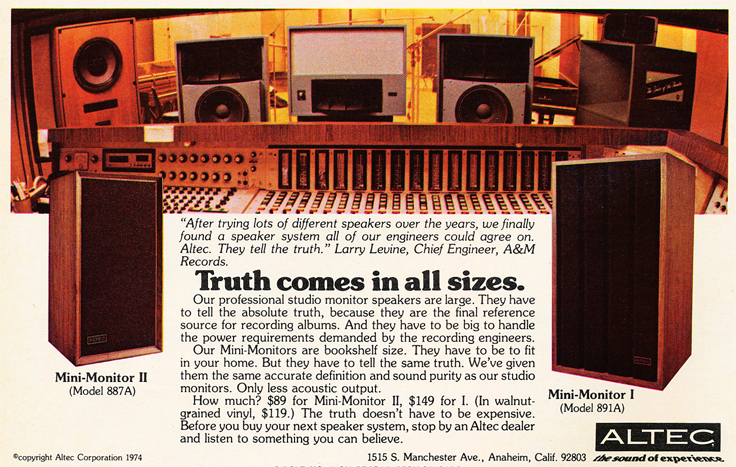

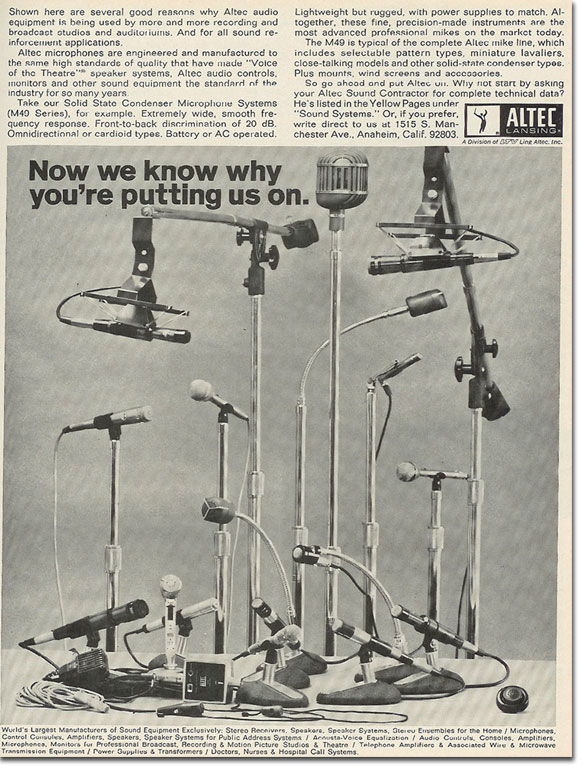
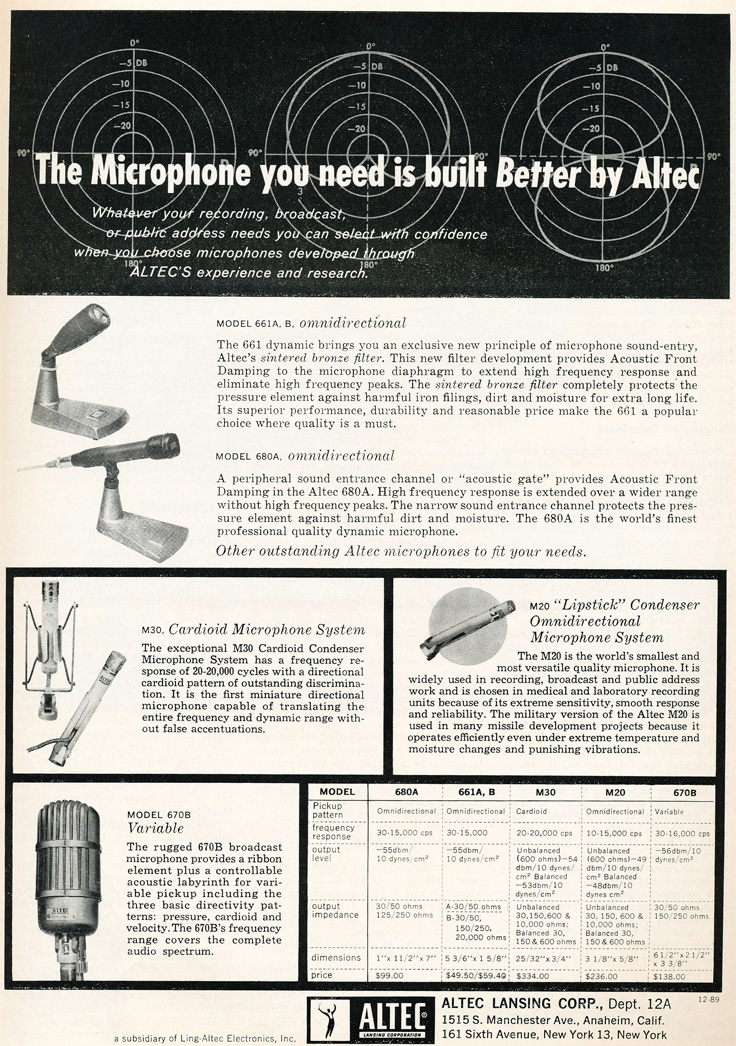

Altec Devices in our collection
|
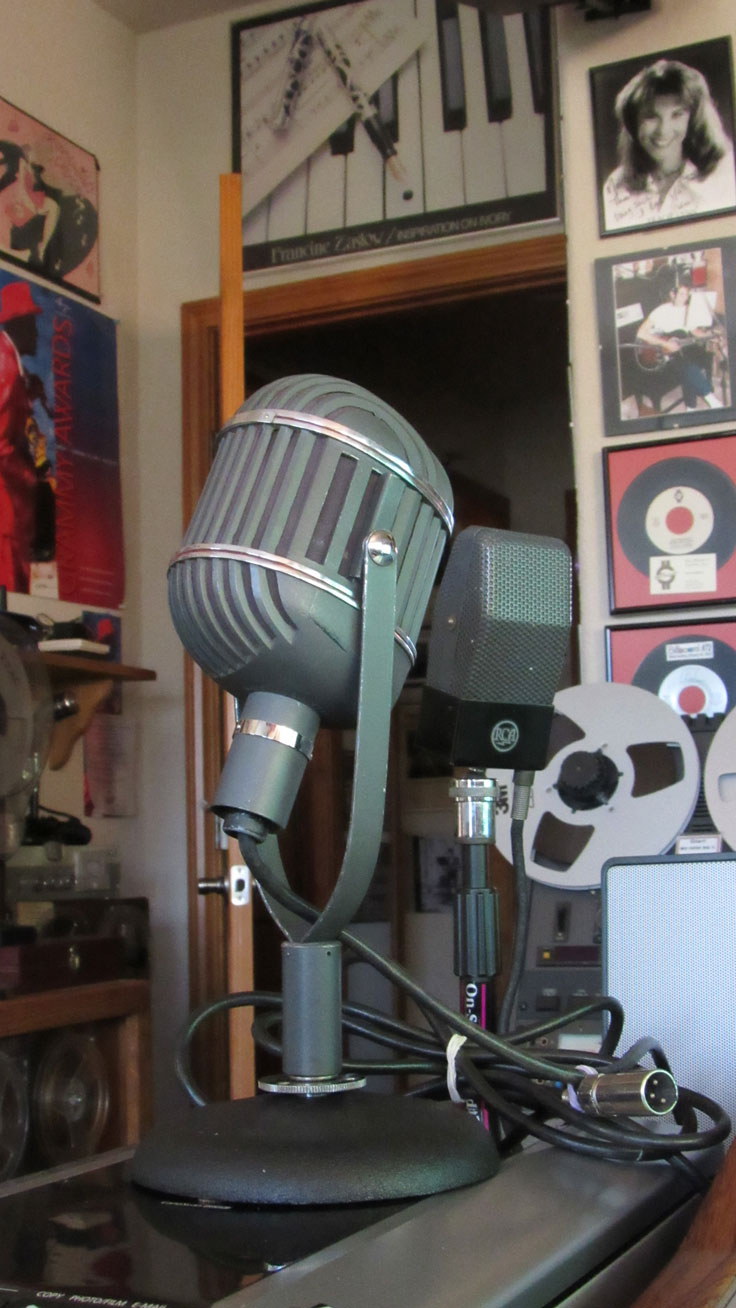 
|
|
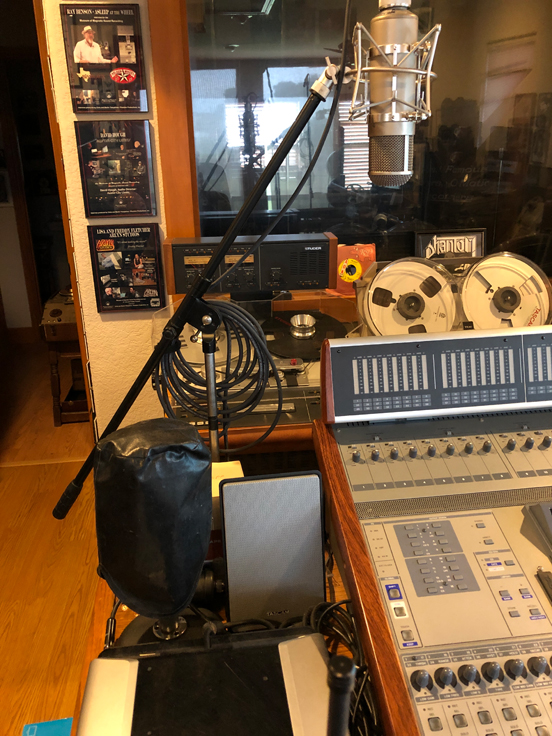 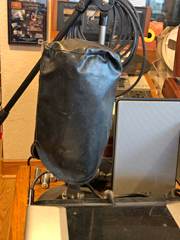
Altec 639 microphone with leather cover
|
|
|
Altec
633C Microphone 1950 ad 1953 ad
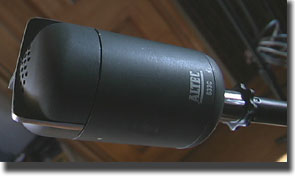
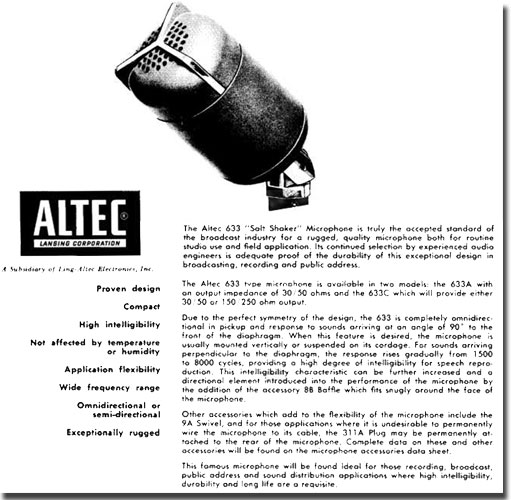
|
Altec
677B Microphone


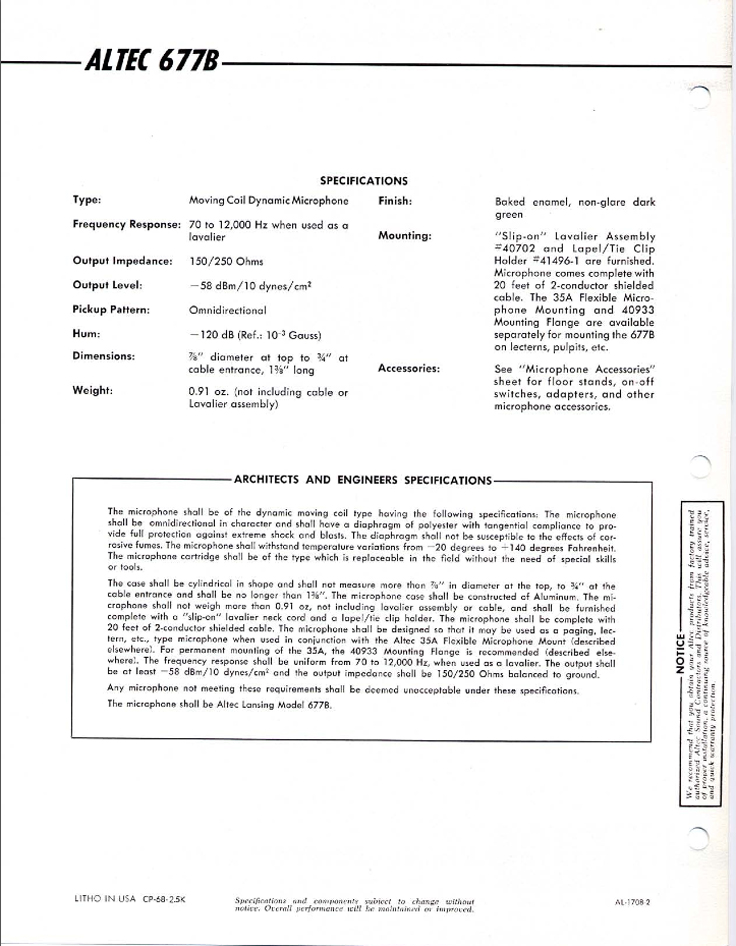
|
Altec
1592B Microphone mixer
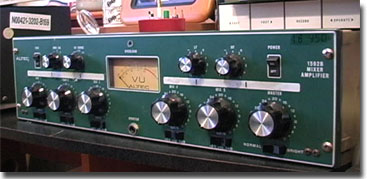
click
on pictures for larger view
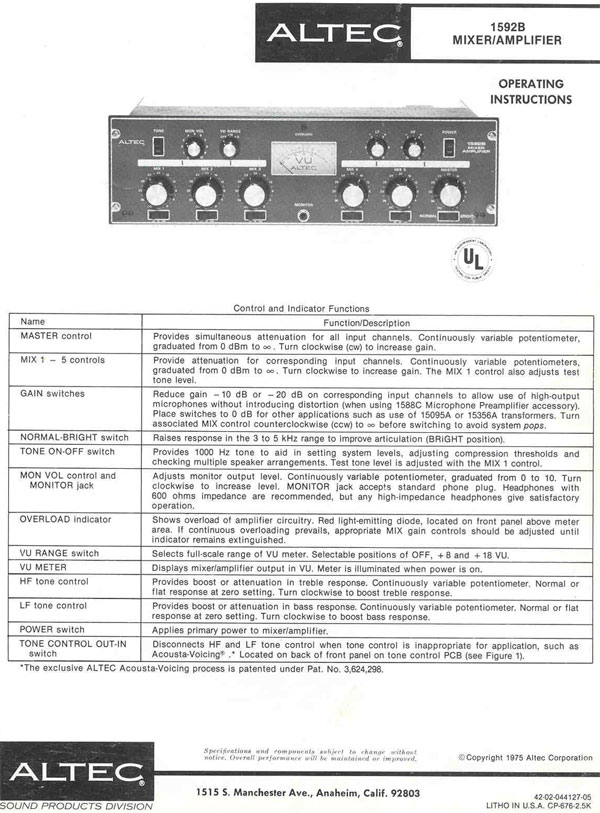 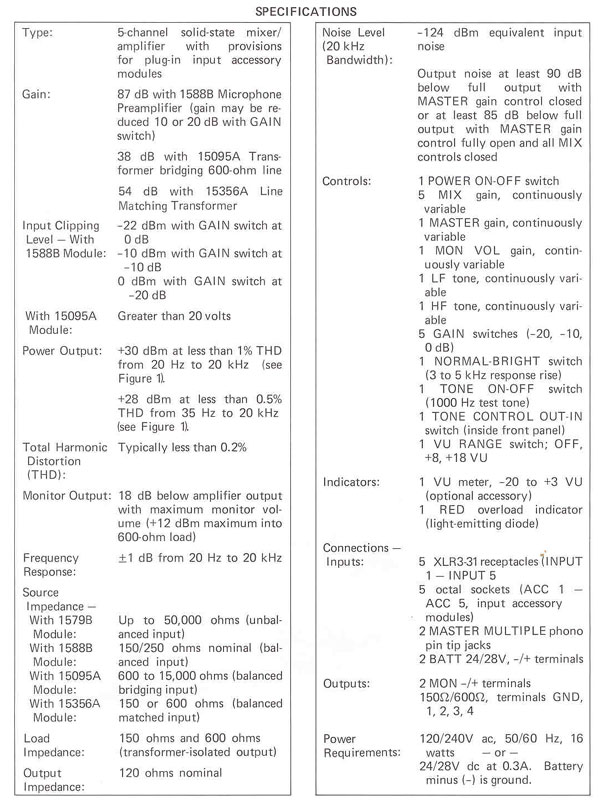
 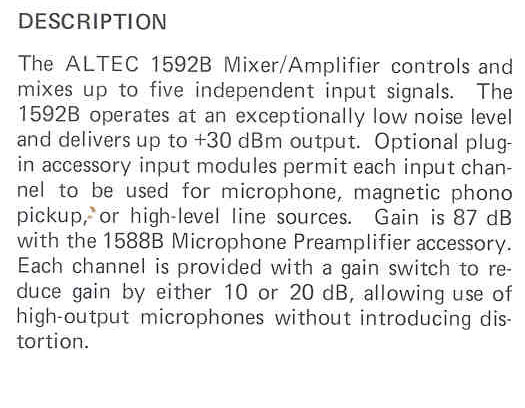
|

